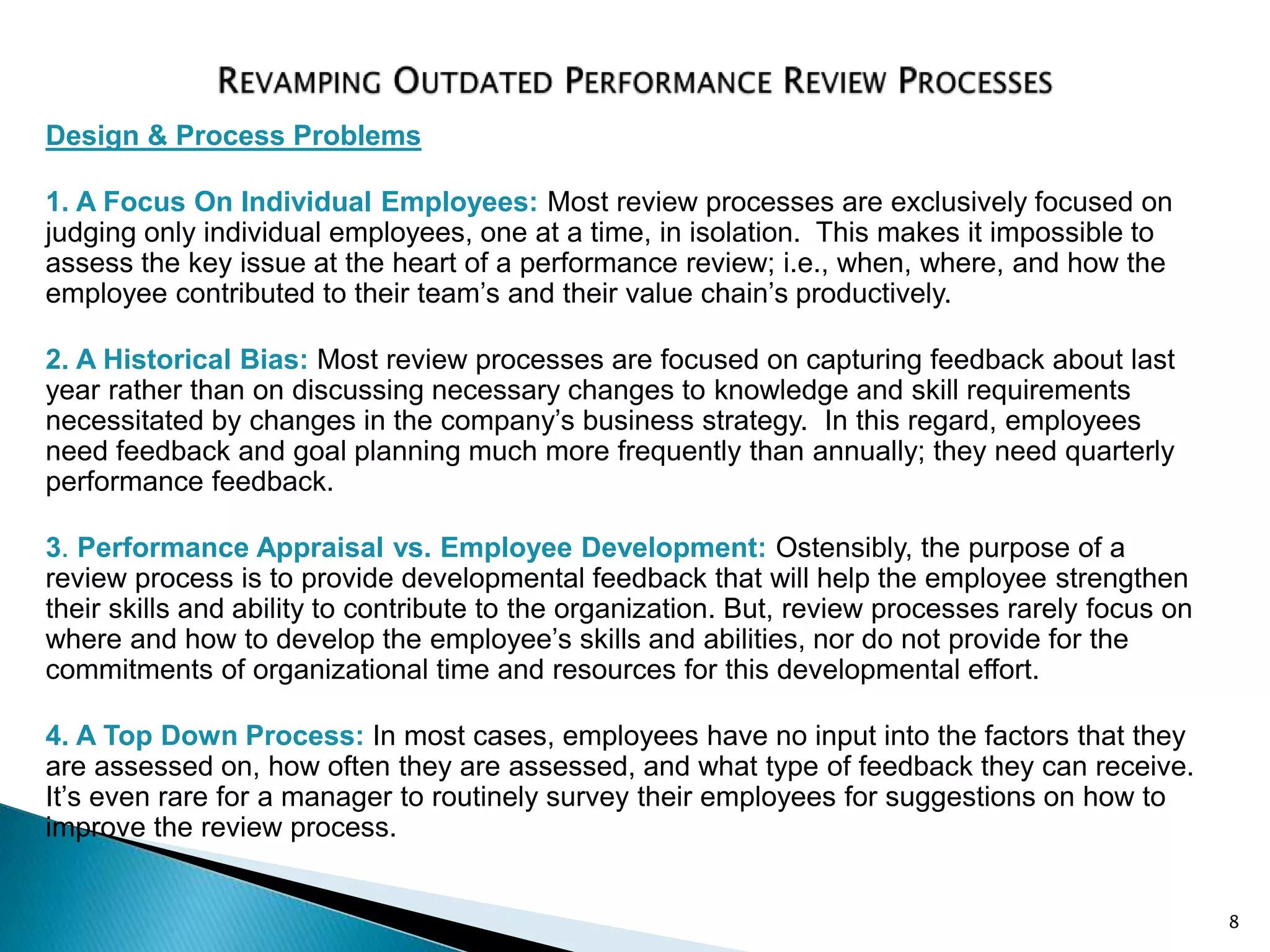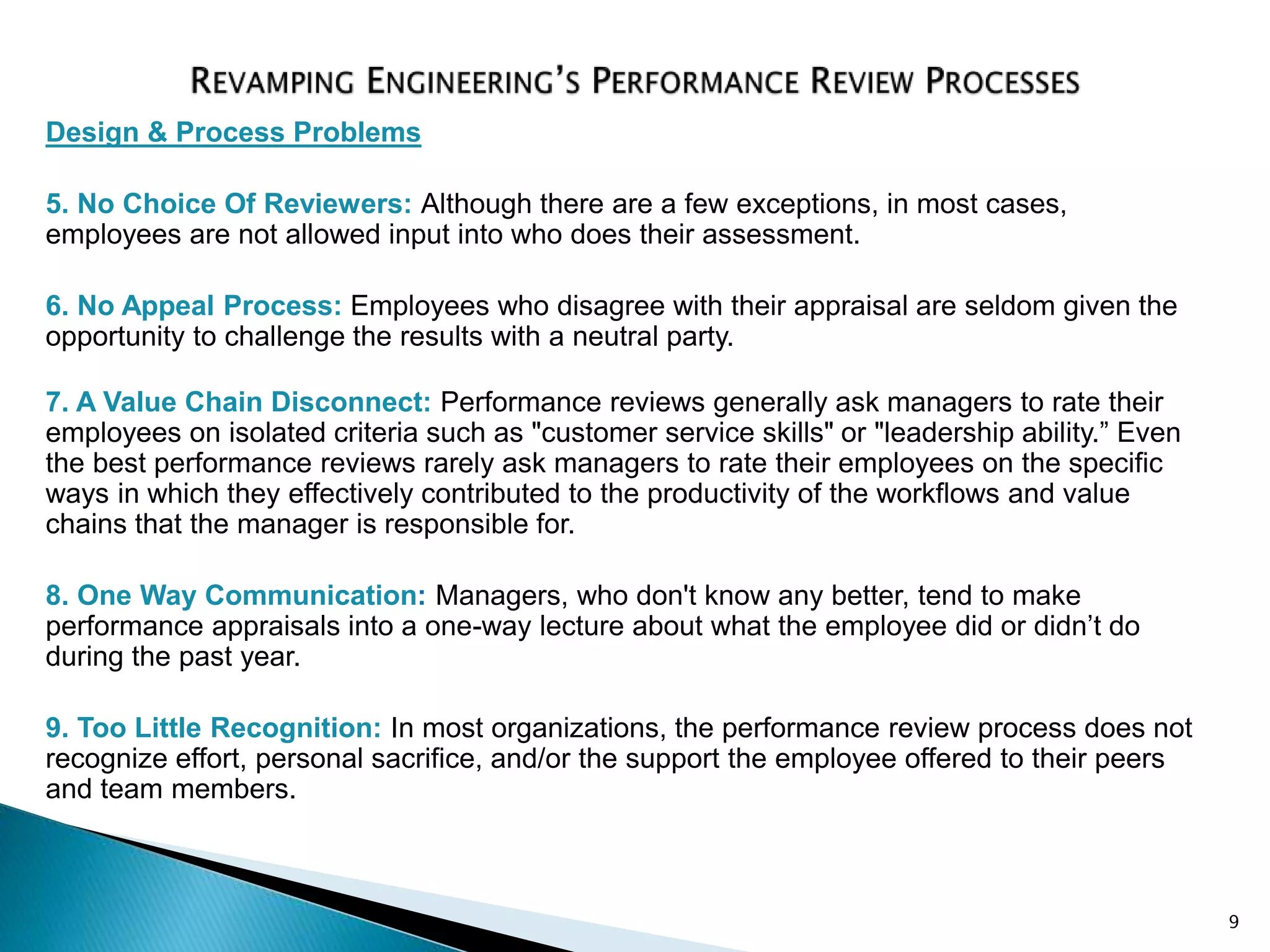Performance reviews have a long history but are now falling out of favor with many companies. Recent studies show that annual reviews often cause anxiety and provide little useful performance improvement information. There are many problems with traditional performance review processes, including inconsistent ratings from managers, untrained managers, focus on individuals rather than teams, and lack of recognition for employee contributions. Many organizations are looking to revamp or replace performance review systems to address these issues.











